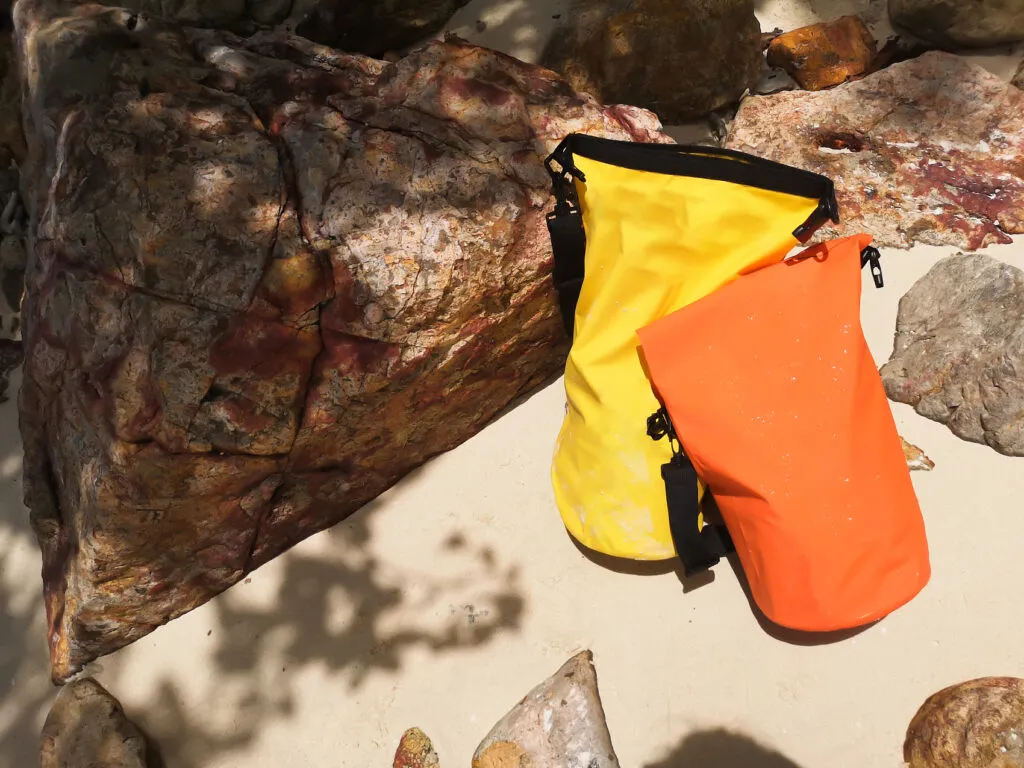In today’s market, dry bags have become indispensable for outdoor enthusiasts, kayakers, and anyone needing to protect their belongings from water damage. This surge in demand presents a lucrative opportunity for businesses to delve into the dry bag wholesale market. In this comprehensive guide, we’ll explore the key aspects of finding reliable dry bag suppliers, evaluating their offerings, and establishing robust partnerships to ensure business success. Our discussion will be punctuated by essential keywords such as dry bag wholesale, kayak dry bag suppliers, and more.
Understanding the Dry Bag Market
Before diving into the process of finding dry bag wholesale suppliers, it’s crucial to understand the market itself. Dry bags come in various shapes, sizes, and materials, each suited for different purposes. These waterproof bags are designed to keep gear dry in wet conditions, making them essential for activities like kayaking, boating, hiking, and camping.
Types of Dry Bags
- Roll-Top Dry Bags: These are the most common type, featuring a roll-top closure that ensures a watertight seal. They are versatile and come in various sizes, suitable for different activities.
- Zipper-Sealed Dry Bags: Equipped with waterproof zippers, these bags offer easy access to contents. They are ideal for quick access to gear but may require more maintenance to keep zippers functioning properly.
- Duffel-Style Dry Bags: These bags combine the capacity of duffel bags with the waterproof features of dry bags. They are perfect for longer trips where more storage space is needed.
- Dry Bag Backpacks: These are hybrid designs that function as both a dry bag and a backpack, offering comfort and convenience for activities that involve a lot of movement.
Evaluating Dry Bag Wholesale Suppliers
After identifying potential suppliers, the next step is to evaluate them based on several critical criteria. This ensures you choose the right partners for your business.
1. Product Quality
Assessing product quality is paramount. Request samples from suppliers to evaluate the materials, construction, and overall durability of their dry bags. Look for high-quality, waterproof materials like PVC or TPU, and check for reinforced seams and robust closures.
2. Pricing and Payment Terms
Compare prices from multiple suppliers to ensure competitive rates. Additionally, review payment terms and conditions. Some suppliers may offer discounts for bulk orders or flexible payment options, which can significantly impact your cash flow management.
3. Minimum Order Quantities (MOQs)
Understanding the supplier’s MOQ requirements is essential. Choose suppliers whose MOQs align with your business needs and budget, avoiding the risk of overstocking or tying up too much capital in inventory.
4. Delivery and Lead Times
Reliable delivery schedules are crucial for maintaining inventory levels and meeting customer demand. Evaluate the supplier’s ability to meet your delivery timelines and their track record for consistency.
5. Customer Service and Support
Effective communication and responsive customer service are vital for a smooth partnership. Suppliers should be easily accessible and willing to address any concerns or questions promptly.
Building Strong Supplier Relationships For Dry Bag Wholesale
Establishing and nurturing strong relationships with dry bag wholesale suppliers is key to long-term business success. Focus on clear communication, mutual trust, and continuous improvement to build robust partnerships.
1. Open Communication
Maintain open and transparent communication with your suppliers. Clearly convey your expectations, requirements, and any changes in orders or schedules to ensure mutual understanding.
2. Consistent Orders
Placing regular orders helps build reliability and trust with suppliers. Consistent business fosters a stable relationship, which can lead to better service and preferential treatment.
3. Negotiation and Flexibility
Negotiating terms that benefit both parties is essential. Flexibility in payment, delivery schedules, and order quantities can enhance the partnership and create a win-win situation.
4. Feedback and Continuous Improvement
Provide constructive feedback on products and services. Collaborate with suppliers to address any issues and work towards continuous improvement in product quality and service efficiency.
5. Support and Mutual Growth
Supporting your suppliers by promoting their products and providing referrals can lead to mutual growth. A cooperative relationship can result in better deals and exclusive product offerings.
Top Strategies for Successful Dry Bag Wholesale Business
To thrive in the dry bag wholesale business, implementing effective strategies is crucial. These strategies help you stay competitive and meet customer expectations.
1. Diversify Product Range
Offering a diverse range of dry bags caters to various customer needs. Stock different types, sizes, and colors to attract a broader audience. Consider including specialized dry bags for specific activities like kayaking, hiking, or fishing.
2. Focus on Quality
High-quality products lead to satisfied customers and repeat business. Ensure that the dry bags you offer are durable, waterproof, and reliable. Emphasize quality in your marketing to build a reputation for excellence.
3. Competitive Pricing
While maintaining quality, competitive pricing is essential. Analyze the market to set prices that attract customers without compromising your profit margins. Bulk purchasing and negotiating favorable terms with suppliers can help you achieve this balance.
4. Efficient Inventory Management
Effective inventory management prevents overstocking and stockouts. Use inventory management software to track stock levels, forecast demand, and plan reorders. This ensures you always have the right amount of inventory to meet customer demand.
5. Strong Online Presence
In today’s digital age, having a strong online presence is vital. Develop a user-friendly website with detailed product descriptions, high-quality images, and customer reviews. Optimize your site for search engines using keywords like dry bag wholesale to attract organic traffic.
6. Marketing and Promotion
Invest in marketing and promotion to increase brand awareness and drive sales. Use social media, email marketing, and online advertising to reach your target audience. Collaborate with influencers or outdoor enthusiasts to showcase your products in real-world scenarios.
7. Excellent Customer Service
Providing exceptional customer service can set you apart from competitors. Respond promptly to inquiries, resolve issues efficiently, and offer hassle-free returns and exchanges. Happy customers are more likely to recommend your business and become repeat buyers.
8. Environmental Responsibility
As environmental awareness grows, more consumers prefer eco-friendly products. Consider offering dry bags made from sustainable materials and highlight these features in your marketing. This can attract environmentally conscious customers and differentiate your brand.
9. Continuous Improvement
Regularly assess and improve your business operations. Gather feedback from customers and suppliers to identify areas for improvement. Stay updated with industry trends and innovations to keep your product offerings fresh and relevant.
10. Building a Brand
Establishing a strong brand identity can create customer loyalty and increase market share. Develop a recognizable logo, consistent branding, and a compelling brand story. Use these elements across all marketing channels to create a cohesive brand image.
Understanding Market Trends and Customer Preferences
Staying abreast of market trends and understanding customer preferences are crucial for success in the dry bag wholesale business. This knowledge allows you to tailor your product offerings and marketing strategies to meet evolving demands.
1. Increasing Outdoor Activities
The popularity of outdoor activities like kayaking, hiking, and camping has been steadily increasing. This trend drives the demand for durable and reliable dry bags. By understanding this trend, you can stock products that cater to outdoor enthusiasts.
2. Preference for Multifunctional Products
Consumers increasingly prefer products that offer multifunctionality. Dry bags that double as backpacks or have additional compartments for organization are highly sought after. Offering such innovative products can give you a competitive edge.
3. Eco-Friendly Products
Environmental sustainability is a significant concern for many consumers. Offering dry bags made from recycled or sustainable materials can attract eco-conscious buyers. Highlighting these features in your marketing can enhance your brand’s appeal.
4. Customization Options
Personalized products are gaining popularity. Providing options for custom logos, colors, or sizes can attract customers looking for unique items. This can be particularly appealing for corporate clients or outdoor event organizers.
5. Technological Advancements
Technological advancements in materials and manufacturing processes can lead to improved product features. Stay updated with the latest developments to offer high-quality, innovative dry bags that meet modern standards.
Case Studies: Successful Dry Bag Wholesale Businesses
Examining successful dry bag wholesale businesses can provide valuable insights and inspiration for your venture. Here are two hypothetical case studies:
Case Study 1: Outdoor Gear Co.
Outdoor Gear Co. started as a small retailer specializing in outdoor equipment. Recognizing the growing demand for dry bags, they decided to venture into the wholesale market. By leveraging their existing supplier relationships and attending trade shows, they secured high-quality products at
competitive prices.
Their strategy included:
- Diversifying Product Range: Offering various types of dry bags, including roll-top, duffel-style, and backpack dry bags.
- Emphasizing Quality: Ensuring all products met high standards for durability and waterproofing.
- Effective Marketing: Utilizing social media and email marketing to reach a broader audience and promote their unique selling points.
- Exceptional Customer Service: Providing prompt responses to inquiries and efficient issue resolution, resulting in high customer satisfaction.
As a result, Outdoor Gear Co. experienced significant growth in their wholesale business, attracting both local retailers and international clients.
Case Study 2: Adventure Supplies Ltd.
Adventure Supplies Ltd. began as an online retailer focusing on adventure and water sports gear. To capitalize on the increasing demand for dry bags, they expanded into the wholesale market. They focused on building strong supplier relationships and offering eco-friendly products.
Their strategy included:
- Eco-Friendly Products: Offering dry bags made from sustainable materials, appealing to environmentally conscious consumers.
- Competitive Pricing: Negotiating favorable terms with suppliers to provide competitive pricing without compromising quality.
- Brand Building: Developing a strong brand identity with a recognizable logo and consistent branding across all marketing channels.
- Customer Engagement: Engaging with customers through social media, gathering feedback, and showcasing real-world use of their products.
Adventure Supplies Ltd. successfully carved out a niche in the market, attracting a loyal customer base and securing long-term wholesale clients.
Conclusion Dry Bag Wholesale
Entering the dry bag wholesale market presents a promising opportunity for businesses willing to invest in quality products and build strong supplier relationships. By understanding the market, implementing effective strategies, and staying attuned to customer preferences, you can establish a successful dry bag wholesale business.
Remember, the keys to success lie in thorough research, careful supplier evaluation, and a commitment to continuous improvement. With the right approach, you can navigate the competitive landscape and secure a profitable position in the dry bag wholesale market.










